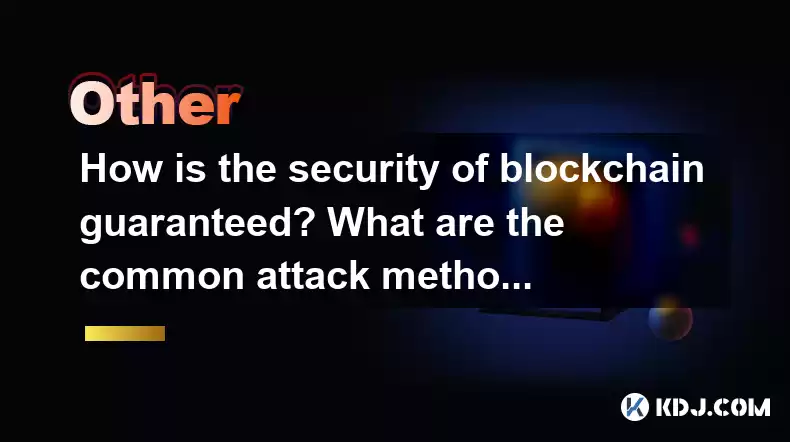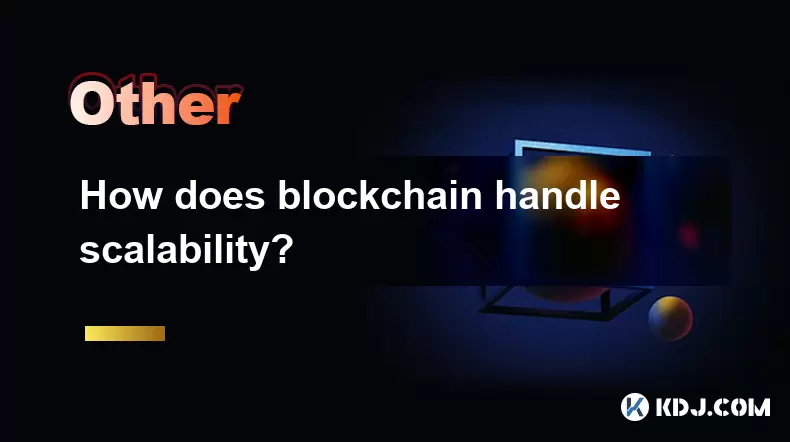-
 Bitcoin
Bitcoin $112400
-1.07% -
 Ethereum
Ethereum $3409
-3.27% -
 XRP
XRP $2.784
-6.60% -
 Tether USDt
Tether USDt $0.9997
-0.03% -
 BNB
BNB $739.3
-2.09% -
 Solana
Solana $158.0
-2.90% -
 USDC
USDC $0.9998
-0.02% -
 TRON
TRON $0.3213
-0.94% -
 Dogecoin
Dogecoin $0.1929
-5.01% -
 Cardano
Cardano $0.6974
-2.82% -
 Hyperliquid
Hyperliquid $36.69
-2.31% -
 Sui
Sui $3.327
-4.80% -
 Stellar
Stellar $0.3672
-5.18% -
 Chainlink
Chainlink $15.65
-3.07% -
 Bitcoin Cash
Bitcoin Cash $525.0
-1.68% -
 Hedera
Hedera $0.2291
-6.00% -
 Avalanche
Avalanche $20.91
-2.96% -
 Ethena USDe
Ethena USDe $1.000
0.00% -
 Toncoin
Toncoin $3.520
-1.12% -
 UNUS SED LEO
UNUS SED LEO $8.968
0.14% -
 Litecoin
Litecoin $105.7
0.26% -
 Shiba Inu
Shiba Inu $0.00001181
-1.79% -
 Polkadot
Polkadot $3.492
-2.08% -
 Uniswap
Uniswap $8.800
-3.10% -
 Dai
Dai $0.9999
-0.01% -
 Monero
Monero $289.9
-3.17% -
 Bitget Token
Bitget Token $4.243
-1.27% -
 Pepe
Pepe $0.00001006
-3.67% -
 Cronos
Cronos $0.1248
-5.68% -
 Aave
Aave $249.7
-2.50%
How is the security of blockchain guaranteed? What are the common attack methods?
Blockchain security relies on cryptographic techniques, consensus mechanisms, and decentralization to ensure robustness against attacks like 51% and Sybil.
Apr 27, 2025 at 02:57 pm

The security of blockchain technology is a crucial aspect that underpins its reliability and widespread adoption. Blockchain security is ensured through a combination of cryptographic techniques, consensus mechanisms, and decentralized network structures. Understanding how these elements work together can help in appreciating the robustness of blockchain systems, as well as recognizing potential vulnerabilities and common attack methods.
Cryptographic Techniques
At the core of blockchain security are cryptographic techniques. These include hash functions, digital signatures, and public-key cryptography.
Hash functions are used to create a unique digital fingerprint of data. In blockchain, each block contains a hash of the previous block, creating a chain of blocks that is extremely difficult to alter without detection. For instance, if someone tries to change the data in a block, the hash of that block will change, which in turn will not match the hash stored in the subsequent block, alerting the network to the tampering.
Digital signatures ensure that transactions are authentic and have not been tampered with. When a user initiates a transaction, it is signed with their private key. The network can then use the corresponding public key to verify the signature, ensuring the transaction's integrity and origin.
Public-key cryptography allows users to have a pair of keys: a public key, which is shared openly, and a private key, which is kept secret. This system enables secure communication and transaction verification without the need for a central authority.
Consensus Mechanisms
Another pillar of blockchain security is the consensus mechanism. This is the process by which nodes in the network agree on the state of the blockchain. Different blockchains use different consensus mechanisms, each with its own security implications.
Proof of Work (PoW) requires nodes (miners) to solve complex mathematical puzzles to validate transactions and add new blocks to the chain. The computational power required to perform these calculations acts as a barrier to malicious actors attempting to alter the blockchain, as they would need to control more than 50% of the network's computing power to execute a successful attack.
Proof of Stake (PoS) selects validators based on the number of coins they hold and are willing to "stake" as collateral. This mechanism incentivizes validators to act honestly, as they stand to lose their stake if they attempt to validate fraudulent transactions.
Delegated Proof of Stake (DPoS) and other variations of consensus mechanisms also contribute to the security of the network by ensuring that only trusted nodes can participate in the validation process.
Decentralized Network Structure
The decentralized nature of blockchain networks is another critical aspect of their security. Unlike centralized systems, where a single point of failure can compromise the entire system, blockchain networks are distributed across thousands of nodes worldwide.
This distribution makes it extremely difficult for an attacker to compromise the network, as they would need to control a majority of the nodes to execute certain types of attacks.
Node redundancy ensures that even if some nodes go offline or are compromised, the network can continue to operate securely.
Common Attack Methods
Despite the robust security measures in place, blockchain networks are not immune to attacks. Understanding common attack methods can help in mitigating risks and enhancing security.
51% Attack: In a PoW system, if a single entity controls more than 50% of the network's mining power, they can control the validation of new blocks. This can allow them to double-spend coins or prevent transactions from being confirmed. However, executing a 51% attack requires significant resources and is typically not feasible for well-established blockchains.
Sybil Attack: This involves an attacker creating multiple fake identities (nodes) to gain disproportionate influence over the network. Blockchain networks mitigate this through mechanisms like PoW and PoS, which require resources or stakes that are difficult to replicate en masse.
Eclipse Attack: In this type of attack, an attacker isolates a node or a group of nodes from the rest of the network, feeding them false information. This can be used to manipulate the view of the blockchain and potentially execute double-spending attacks.
Smart Contract Vulnerabilities: Many blockchains, especially those supporting decentralized applications (dApps), use smart contracts. If these contracts are not written securely, they can be exploited. Common vulnerabilities include reentrancy attacks, where an attacker repeatedly calls a function to drain funds, and integer overflow/underflow issues that can be manipulated to change the state of the contract unexpectedly.
Phishing and Social Engineering: While not a direct attack on the blockchain itself, these methods can be used to steal private keys or other sensitive information from users, allowing attackers to access and manipulate funds on the blockchain.
Enhancing Blockchain Security
To further enhance the security of blockchain networks, several practices and technologies can be employed:
Regular Audits: Conducting regular security audits of the blockchain protocol and smart contracts can help identify and fix vulnerabilities before they can be exploited.
Multi-signature Wallets: Using wallets that require multiple signatures to authorize a transaction can add an additional layer of security, making it harder for attackers to steal funds.
Zero-Knowledge Proofs: These cryptographic protocols allow one party to prove to another that a given statement is true, without revealing any information beyond the validity of the statement itself. They can be used to enhance privacy and security on the blockchain.
Network Monitoring and Incident Response: Implementing robust monitoring systems to detect unusual activity and having a clear incident response plan can help mitigate the impact of attacks.
Frequently Asked Questions
Q: Can blockchain be hacked?
A: While blockchain technology is highly secure, it is not entirely immune to hacks. Attacks like 51% attacks, Sybil attacks, and exploitation of smart contract vulnerabilities can compromise certain aspects of a blockchain network. However, the decentralized and cryptographic nature of blockchain makes it extremely difficult to execute successful large-scale attacks.
Q: How does blockchain ensure the privacy of transactions?
A: Blockchain ensures transaction privacy through the use of public-key cryptography and, in some cases, zero-knowledge proofs. While transactions are recorded on a public ledger, the identities of the parties involved are typically represented by their public keys, which do not reveal personal information. Additionally, some blockchains use privacy-enhancing technologies like ring signatures or confidential transactions to further obscure transaction details.
Q: What role do miners play in blockchain security?
A: Miners play a crucial role in blockchain security, particularly in PoW systems. They validate transactions and add new blocks to the chain by solving complex mathematical puzzles. This process not only secures the network by requiring significant computational power to alter the blockchain but also incentivizes honest behavior through the reward of newly minted coins and transaction fees.
Q: Are all blockchains equally secure?
A: No, the security of a blockchain can vary based on several factors, including the consensus mechanism used, the size and decentralization of the network, and the robustness of the underlying protocol. For example, a blockchain with a small number of nodes or a less secure consensus mechanism may be more vulnerable to attacks than a well-established blockchain with a large, decentralized network.
Disclaimer:info@kdj.com
The information provided is not trading advice. kdj.com does not assume any responsibility for any investments made based on the information provided in this article. Cryptocurrencies are highly volatile and it is highly recommended that you invest with caution after thorough research!
If you believe that the content used on this website infringes your copyright, please contact us immediately (info@kdj.com) and we will delete it promptly.
- BlockDAG, SEI, Ethena: Top Crypto Performers Under the Microscope
- 2025-08-03 10:50:16
- Bitcoin Blasts Past $119K: How Institutional Adoption and Macro Shifts Fuel the Fire
- 2025-08-03 10:55:16
- Crypto, Grok, and August: Decoding the Latest Trends and Insights
- 2025-08-03 11:10:16
- Crypto, Phishing, and Your Wallet: A New Yorker's Guide to Staying Safe
- 2025-08-03 10:30:16
- Troller Cat Meme Coin Presale Soars: A New King in the Crypto Jungle?
- 2025-08-03 10:30:16
- Grayscale, Altcoin Trust, and Mid-Cap Mania: What's the Deal?
- 2025-08-03 08:50:16
Related knowledge

What is the difference between on-chain and off-chain transactions?
Aug 02,2025 at 04:22pm
Understanding On-Chain TransactionsOn-chain transactions refer to digital asset transfers that are recorded directly on a blockchain ledger. These tra...

What is the double-spending problem and how does blockchain prevent it?
Aug 02,2025 at 01:07pm
Understanding the Double-Spending ProblemThe double-spending problem is a fundamental challenge in digital currency systems where the same digital tok...

What is the difference between a blockchain and a database?
Aug 01,2025 at 09:36pm
Understanding the Core Structure of a BlockchainA blockchain is a decentralized digital ledger that records data in a series of immutable blocks linke...

How does blockchain handle scalability?
Aug 02,2025 at 02:58pm
Understanding Blockchain Scalability ChallengesBlockchain scalability refers to a network's ability to handle an increasing volume of transactions wit...

What are the different types of blockchains?
Aug 03,2025 at 03:01am
Public Blockchains: Open and Decentralized NetworksPublic blockchains are the most widely recognized type of blockchain, characterized by their open a...

What is a hash in a blockchain?
Aug 02,2025 at 05:28am
Understanding the Concept of Hash in BlockchainA hash in the context of blockchain technology refers to a unique digital fingerprint generated by a cr...

What is the difference between on-chain and off-chain transactions?
Aug 02,2025 at 04:22pm
Understanding On-Chain TransactionsOn-chain transactions refer to digital asset transfers that are recorded directly on a blockchain ledger. These tra...

What is the double-spending problem and how does blockchain prevent it?
Aug 02,2025 at 01:07pm
Understanding the Double-Spending ProblemThe double-spending problem is a fundamental challenge in digital currency systems where the same digital tok...

What is the difference between a blockchain and a database?
Aug 01,2025 at 09:36pm
Understanding the Core Structure of a BlockchainA blockchain is a decentralized digital ledger that records data in a series of immutable blocks linke...

How does blockchain handle scalability?
Aug 02,2025 at 02:58pm
Understanding Blockchain Scalability ChallengesBlockchain scalability refers to a network's ability to handle an increasing volume of transactions wit...

What are the different types of blockchains?
Aug 03,2025 at 03:01am
Public Blockchains: Open and Decentralized NetworksPublic blockchains are the most widely recognized type of blockchain, characterized by their open a...

What is a hash in a blockchain?
Aug 02,2025 at 05:28am
Understanding the Concept of Hash in BlockchainA hash in the context of blockchain technology refers to a unique digital fingerprint generated by a cr...
See all articles

























































































